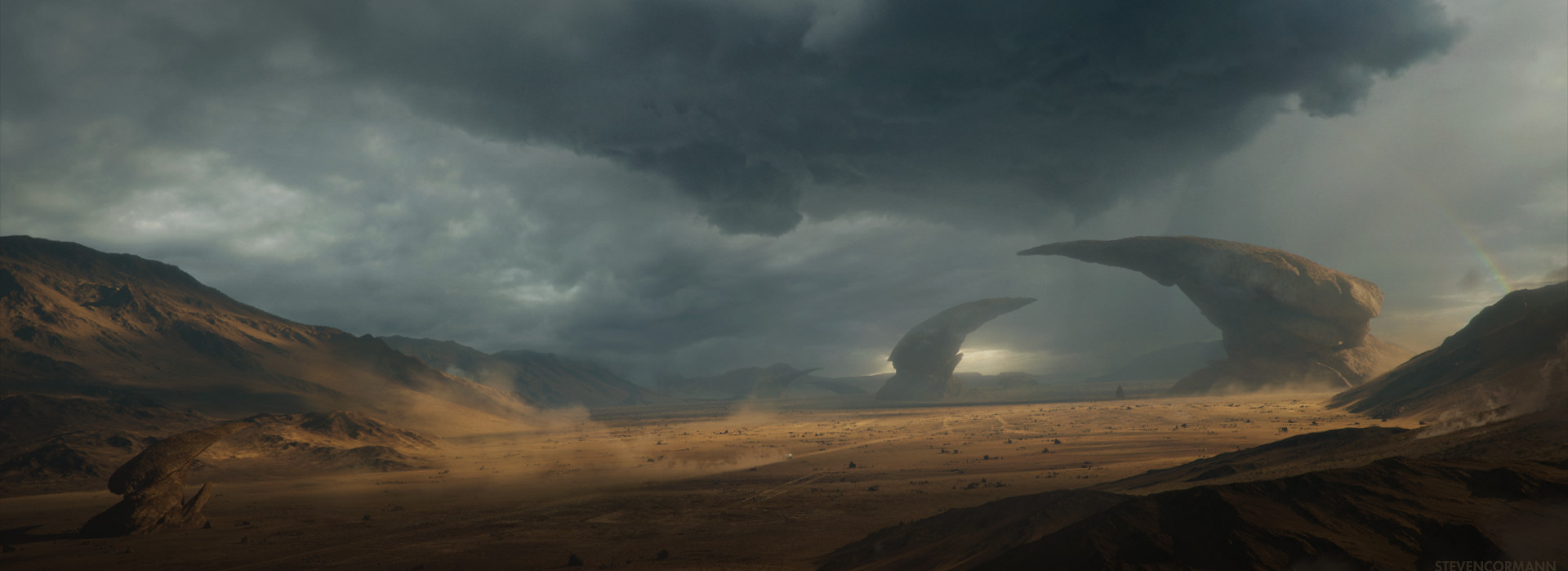Godla
Brief
The trip had taken too long and, now that the city was within sight, now it dragged on. Keller just wanted to be there. The bulky, short legged animals pulling the wagons weren't fast, though. They weren't meant to be. Rather, their stout stature and horned face was for dealing with the dangers of Xhousong. Predators and bandits roamed the Wastes. Wouldn't do if they had their mounts killed during travel. The muscled, armored hide of the godla would deter most wild animals. Their attachment to the drivers would prevent them from being stolen from bandits. Leave it to Nyar to afford such things for travel. It had meant they'd only needed to stop once for the whole trip. The godla didn't really need rest, could eat while they walked. It was only for water, which they needed very little of, that they'd stopped at all.
Basic Information
Anatomy
Godla have four stout legs and hard, almost armor-plating like skin, with horns that run down their back and protrude from their face. Heavy, slow moving creatures, the godla stand just over 6' at their shoulder. Heavy with muscle, godla are capable of pulling or dragging five times their weight for long distances.
Genetics and Reproduction
Godla pair off for life and become quite lethargic without their mate once they do. The female becomes fertile only when resources become abundant - when she's received enough nutrients over an extended period of time, her body will go into heat. It then takes almost a year for the calf to be born. Once it is, the calf is fully capable and ready to walk within minutes of being birthed. Running is achievable within the hour.
Godla calves will stay with the mother for nearly five years before they're ready to be separated.
Growth Rate & Stages
Godla are long lived herbavores. Though they remain young and grow slow, the oldest on record is just shy of a century. When properly cared for, they easily outlive their human owners and are frequently an animal that is passed down through families.
Dietary Needs and Habits
Godla are so prized because of their ability to survive the Xhousong wastes. They can go long distances off of little water, can eat nearly anything organic - and will, and are big enough that most of the natural predators of the wastes won't bother them. What's more, they don't have to rest very often. While not fast, the godla are capable of a steady pace for days without needing to stop. This time is shortened if they are pulling a heavy load, but they can be relied upon to steer clear of storms.
Additional Information
Social Structure
Domestication
Godla are relatively easy to domesticate, especially if they are birthed and raised amongst people. Then they tend to view 'people' as part of their herd. They do have a difficult time being traded or sold off to strangers and periods of adjustments can be difficult for the new owners, but by their very nature, godla are passive, generally calm creatures especially around things they don't perceive as a threat. They take intruction well, though patience might be required to teach them. Any sort of pain or forcefulness in their training will not work - a godla is easily bigger than a person and, when force or cruelty is used, the animal ceases to cooperate. Worst case, the godla will attempt to escape.
Uses, Products & Exploitation
Only once a godla has died of natural causes or of old age is it pieced out - away from other godla. The skin is used for parchment, other parts and organs for meat, and the borns and horns are shaped and filed into various tools and instruments. No part of the animal goes to waste. Given how useful they are, and how expensive it is to own an animal in Xhousong, they are only pieced out after they have died. Godla are not expressly slaughtered to eat or use beforehand.
Average Intelligence





Comments